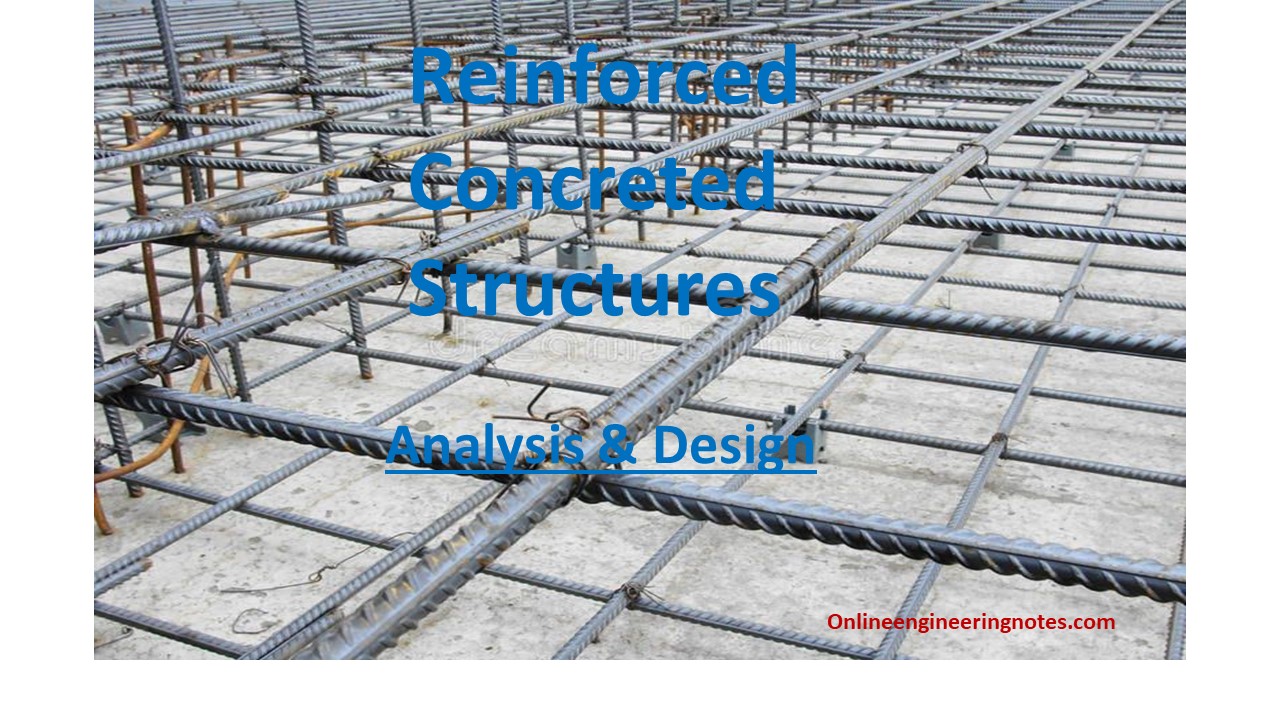Reinforced concrete structures
- During the bending of simply supported structures, the upper portion is subjected to compressive stresses, while the lower portion is subjected to tensile stresses.
- The permissible tensile stress in concrete is about one-tenth of the permissible compressive stress, therefore the tensile stresses in the structure are taken care of by the steel.
- Such a combination of concrete and steel is known as reinforced cement concrete (RCC) & structure is known as reinforced concrete structures.
Note: for the same cross-section of steel to that of concrete, tensile strength is 300 times, while compressive strength is 30 times that of concrete.
There are three types of steel reinforcement bars:
- Mild steel and medium tensile steel bars
- Deformed bars
- Cold twisted bars
What are deformed bars?
Deformed bars have projection and check the slipping of bars, developing a great bond.
Note:
- when we used cold twisted bars instead of normal mild steel bars, it increased yield stress by about 50%. Hence save reinforcing material by 33%.
- The pitch of projection in the deformed bar is in the range of (90-120) mm.
- Size of bars = 5,6,8,10,12,16,20,22,25,32,36,40,45 and 50 mm.
Design methods of RCC structures:
Working Stress Method
- This method is known as a modular ratio or elastic method.
- Most popular and common method.
- The moment and forces acting on a structure are obtained from the actual values of service loads.
- The stresses in concrete and the reinforcing steel are restricted to only a fraction of their true strengths in order to provide an adequate factor of safety.
i.e., FOS (conc) = 3
FOS (steel) =1.78-1.80
Limit State Method
- This method is known as the plastic method.
- It is designed to withstand safely all loads throughout its life.
- It also satisfies serviceability requirements such as excessive deflections, cracking, vibrations, etc.
Ultimate Strength Method
- This method is also known as the load factor method.
- In this method true margin of safety is exactly known.
- It is based upon results obtained from experiments depicting true behaviors of structures.
Working Stress Philosophy
- Traditional method used for a reinforced concrete design where it is assumed that concrete is elastic, steel and concrete act together elastically and the relationship between loads & stresses is linear right up to the collapse of the structures.
- The elastic theory assumes a linear variation of strain and stress from zero at the neutral axis to a maximum at the extreme fiber.

Assumptions:
- A section that is plane before bending remains plain after bending (Bernoulli’s Assumptions)
- Within the elastic limit the bond between steel and concrete is perfect
- The tensile strength of concrete is ignored.
- The stress in concrete varies linearly from zero at its neutral axis and maximum at its extreme fiber. i.e., concrete is elastic.
- The modular ratio ‘m’ has the value (280/
cb) where
cb is the permissible compressive stress in bending. its unit is N/mm2 or mpa.
Drawbacks:
- Concrete is not actually elastic. The inelastic behavior of concrete is even shown in low stresses. i.e., the distribution of actual stress in concrete is not described by triangular shape.
- Since the factor of safety is on the stresses under working loads, there is no way to account for different degrees of uncertainties associated with different types of loads. With elastic theory, it is impossible to determine the actual factor with respect to loads.
- It is difficult for shrinkage and creeps’ effects by using the working stress method.
Limit state philosophy:
- Limit state philosophy has originated from ultimate or plastic design.
- The object of design is to achieve an acceptable probability that a structure will not become unserviceable in its lifetime for the use for which it is intended, i.e., it will not reach a limit state.
- A structure with appropriate degrees of reliability should be able to withstand safely all loads and also satisfy the serviceability requirements, such as limitations on deflections and cracking.
The most important of these above limit states which must be examined in design are as follows:
Limit state of collapse:
- The collapse limit states or ultimate limit states concern the safety of people and/or the safety of the structures
- When collapse limit states violate, it implies failure in the sense that a clearly defined limit state of structural usefulness has been exceeded.
- The ultimate limit state :
- Flexure
- compression
- Shear, and
- Torsion
Limit states of serviceability:
- The serviceability limit states concern the functioning of the structure or structural members under normal use, the comfort of people, or the appearance of the construction world.
The factors and l called partial safety factors in the limit state concept of design of reinforced concrete structures.

References:
- Reinforced Concrete Limit State/ A.K. Jain

